bomber
 Most people know what a blimp is. It is an airship, but not the first airship. Most people have also heard of the Hindenburg…a airship than exploded causing an horrific crash. While one airship is loved by all who see it, and one met a horrible end, yet another airship brought fear to many. The third airship…a Zeppelin, which is a type of rigid airship named after the German Count Ferdinand von Zeppelin who pioneered rigid airship development at the beginning of the 20th century, was used at one time as a bomber.
Most people know what a blimp is. It is an airship, but not the first airship. Most people have also heard of the Hindenburg…a airship than exploded causing an horrific crash. While one airship is loved by all who see it, and one met a horrible end, yet another airship brought fear to many. The third airship…a Zeppelin, which is a type of rigid airship named after the German Count Ferdinand von Zeppelin who pioneered rigid airship development at the beginning of the 20th century, was used at one time as a bomber.
Zeppelin’s notions were first formulated in 1874 and developed in detail in 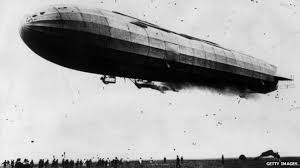 1893. When they were built, they were patented in Germany in 1895 and in the United States in 1899, as commercial passenger airships. The airship design was an outstanding success, and the word zeppelin is often used to refer to all rigid airships. Zeppelins were first flown commercially in 1910 by Deutsche Luftschiffahrts-AG (DELAG), the world’s first airline in revenue service. By mid-1914, DELAG had carried over 10,000 fare-paying passengers on over 1,500 flights. Those were the good years of its use.
1893. When they were built, they were patented in Germany in 1895 and in the United States in 1899, as commercial passenger airships. The airship design was an outstanding success, and the word zeppelin is often used to refer to all rigid airships. Zeppelins were first flown commercially in 1910 by Deutsche Luftschiffahrts-AG (DELAG), the world’s first airline in revenue service. By mid-1914, DELAG had carried over 10,000 fare-paying passengers on over 1,500 flights. Those were the good years of its use.
During World War I, the German military found a new use for the Zeppelins. They were used as bombers and scouts. The new Zeppelins brought terror to the people. During their use, the Zeppelins were used to kill over 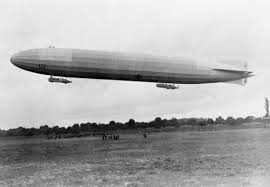 500 people in bombing raids in Britain. The new type of bomber didn’t, however, bring victory to Germany in World War I. When you think about it, how could an airship, like the Zeppelin make a good fighting aircraft. Its very design was far too vulnerable to any kind of bullet. I suppose that it was thought that there wouldn’t be many other “bombers” in the sky, but that doesn’t make the Zeppelin a safe bomber in any way. Nevertheless…safe, effective, accurate, or not…the Zeppelin worked as a bomber for a time. Unusual as it was, the slow-moving…about 84 miles per hour…airship had the distinct honor of being a bomber in World War I.
500 people in bombing raids in Britain. The new type of bomber didn’t, however, bring victory to Germany in World War I. When you think about it, how could an airship, like the Zeppelin make a good fighting aircraft. Its very design was far too vulnerable to any kind of bullet. I suppose that it was thought that there wouldn’t be many other “bombers” in the sky, but that doesn’t make the Zeppelin a safe bomber in any way. Nevertheless…safe, effective, accurate, or not…the Zeppelin worked as a bomber for a time. Unusual as it was, the slow-moving…about 84 miles per hour…airship had the distinct honor of being a bomber in World War I.
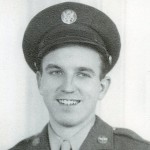 When the United States entered World War II, after the attack on Pearl Harbor, we were a nation with a score to settle. The Japanese had killed our people, and we vowed to make them pay. In addition to that, the Nazis were killing the Jewish people, and they had to be stopped. Their cruel killing of so many people in their gas chambers could not be tolerated. Revenge against the Japanese would have to wait for now, because the Nazi cruelty could no longer be kept hidden.
When the United States entered World War II, after the attack on Pearl Harbor, we were a nation with a score to settle. The Japanese had killed our people, and we vowed to make them pay. In addition to that, the Nazis were killing the Jewish people, and they had to be stopped. Their cruel killing of so many people in their gas chambers could not be tolerated. Revenge against the Japanese would have to wait for now, because the Nazi cruelty could no longer be kept hidden.
On of the biggest battles fought on German soil was the Battle of Berlin. It was fought over the course of a couple of years, and Britain’s Royal Air Force had been badly beaten by the Germans. Then when the United States joined in, things began to take a 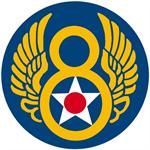 turn for the better. On May 7, 1944, the United States 8th Air Force sent 1500 bombers in to attack Berlin. More were sent the next day. The headlines were exuberant. Headlines like Berlin “Condemned to Death”, U.S. Planes Blast Berlin Twice, Capital Lies In Stark Ruins, and Berlin Again Plastered By Yank Fliers, were splattered across the papers. It was the ultimate attack on the heart of Nazi Germany from the Mighty 8th Air Force. I think everyone knew that Hitler’s days in power were numbered. It was true. The Nazis surrendered unconditionally a year later.
turn for the better. On May 7, 1944, the United States 8th Air Force sent 1500 bombers in to attack Berlin. More were sent the next day. The headlines were exuberant. Headlines like Berlin “Condemned to Death”, U.S. Planes Blast Berlin Twice, Capital Lies In Stark Ruins, and Berlin Again Plastered By Yank Fliers, were splattered across the papers. It was the ultimate attack on the heart of Nazi Germany from the Mighty 8th Air Force. I think everyone knew that Hitler’s days in power were numbered. It was true. The Nazis surrendered unconditionally a year later.
My dad was a Top Turret Gunner and Flight Engineer on a B-17G Bomber at this time, and while I don’t know if Dad took part in this attack, I can say that it is entirely possible. My dad didn’t talk about his war days much…most men from that era didn’t. I 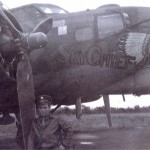 have to think that it was hard to remember those missions, because no matter how distanced you were from your target, you were still very aware that people were dying because of the bombs you were dropping. Sure, they were the enemy, and you were doing your job, but the were also humans. I think, if it were me, I would rather have to kill in the way my dad did…not looking into the eyes of the person you are about to kill, and in some attacks, the people didn’t have any idea that they were about to die. They, like my dad, were just doing their jobs. Still, they were soldiers under a cruel dictator, with no choice but to obey orders. Nevertheless, sad as it was for those people to die, I am very proud of my dad’s service. And if he was in this battle, then I am proud of that too.
have to think that it was hard to remember those missions, because no matter how distanced you were from your target, you were still very aware that people were dying because of the bombs you were dropping. Sure, they were the enemy, and you were doing your job, but the were also humans. I think, if it were me, I would rather have to kill in the way my dad did…not looking into the eyes of the person you are about to kill, and in some attacks, the people didn’t have any idea that they were about to die. They, like my dad, were just doing their jobs. Still, they were soldiers under a cruel dictator, with no choice but to obey orders. Nevertheless, sad as it was for those people to die, I am very proud of my dad’s service. And if he was in this battle, then I am proud of that too.
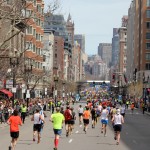 Running for exercise has not always been as common an occurrence as it is these days. Before machinery, cars, and other modern conveniences, people walked to many of the places they went, and so the thought of specifically walking or running to get exercise was pretty foreign. Nevertheless, there were races, and sporting events, so it wasn’t unheard of to run or walk for exercise. Most people have heard of the Boston Marathon…especially after the bombing that took place there April 15, 2013. The marathon has been a runners biggest goal since its first event, held on April 19, 1897. The marathon was an event that came from the dream of Boston Athletic Association member and inaugural US Olympic team manager, John Graham, who was inspired by the marathon at the first modern Olympic Games in Athens in 1896. He immediately set out to bring the race home to the United States. Graham enlisted the help of Herbert H Holton, a Boston businessman. They considered various routes, before a measured distance of 24.5 miles from the Irvington Oval in Boston to Metcalf’s Mill in Ashland was eventually selected.
Running for exercise has not always been as common an occurrence as it is these days. Before machinery, cars, and other modern conveniences, people walked to many of the places they went, and so the thought of specifically walking or running to get exercise was pretty foreign. Nevertheless, there were races, and sporting events, so it wasn’t unheard of to run or walk for exercise. Most people have heard of the Boston Marathon…especially after the bombing that took place there April 15, 2013. The marathon has been a runners biggest goal since its first event, held on April 19, 1897. The marathon was an event that came from the dream of Boston Athletic Association member and inaugural US Olympic team manager, John Graham, who was inspired by the marathon at the first modern Olympic Games in Athens in 1896. He immediately set out to bring the race home to the United States. Graham enlisted the help of Herbert H Holton, a Boston businessman. They considered various routes, before a measured distance of 24.5 miles from the Irvington Oval in Boston to Metcalf’s Mill in Ashland was eventually selected.
Fifteen runners started that first race, but only ten would finish. The winner was John J McDermott, who finished with a time of 2 hours, 55 minutes, and 10 seconds. McDermott was sponsored by the Pastime Athletic Club of New York City. He took the lead from Harvard athlete, Dick Grant over the hills in Newton. He did walk several times during the final miles, but still won by a comfortable margin of 6 minutes and 52 seconds. He had only won one other marathon in the United States…the previous October in New York City.
As most people know, a marathon is normally 26.2 miles, and the original Boston Marathon was only 24.5. That was changed in 1908 so that it would be in compliance with the rules of a marathon. The marathon was originally held on Patriot’s Day, April 19, a holiday that commemorates the beginning of the Revolutionary War. When Patriot’s Day fell on Sunday, the race was held the following Monday. Then when Patriot’s Day was made a Monday holiday in 1969, the Boston Marathon moved with it, and it has been that way since that time.
Originally, women were not allowed to run in the Boston Marathon, which made a lot of women angry. That rule finally changed in 1972, but not without a few missteps first. In 1966, Roberta “Bobbi” Gibb decided to fight the system. She became the first woman to run the entire Boston Marathon, but had to hide in the bushes near the start until the race began. In 1967, Kathrine Switzer, who had registered as “K. V. Switzer”, was the first woman to run with a race number. Switzer finished even though officials tried to physically remove her from the race after she was identified as a woman. In the fall of 1971, the Amateur Athletics Union permitted 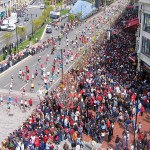 its sanctioned marathons, including Boston, to allow women to enter. Nina Kuscsik became the first official female participant to win the Boston Marathon in 1972. Seven other women started and finished that race. In 1975, the Boston Marathon became the first major marathon to include a wheelchair division competition, which Bob Hall won in 2 hours, 58 minutes.
its sanctioned marathons, including Boston, to allow women to enter. Nina Kuscsik became the first official female participant to win the Boston Marathon in 1972. Seven other women started and finished that race. In 1975, the Boston Marathon became the first major marathon to include a wheelchair division competition, which Bob Hall won in 2 hours, 58 minutes.
Exercise has become a regular part of the lives of many people these days, whether they walk, run, bicycle, or some other form of exercise. While I can’t imagine myself running in a marathon…or any other race, I could see myself walking such a distance. Once you get started with exercise, it can become very addictive, and that’s ok too.

